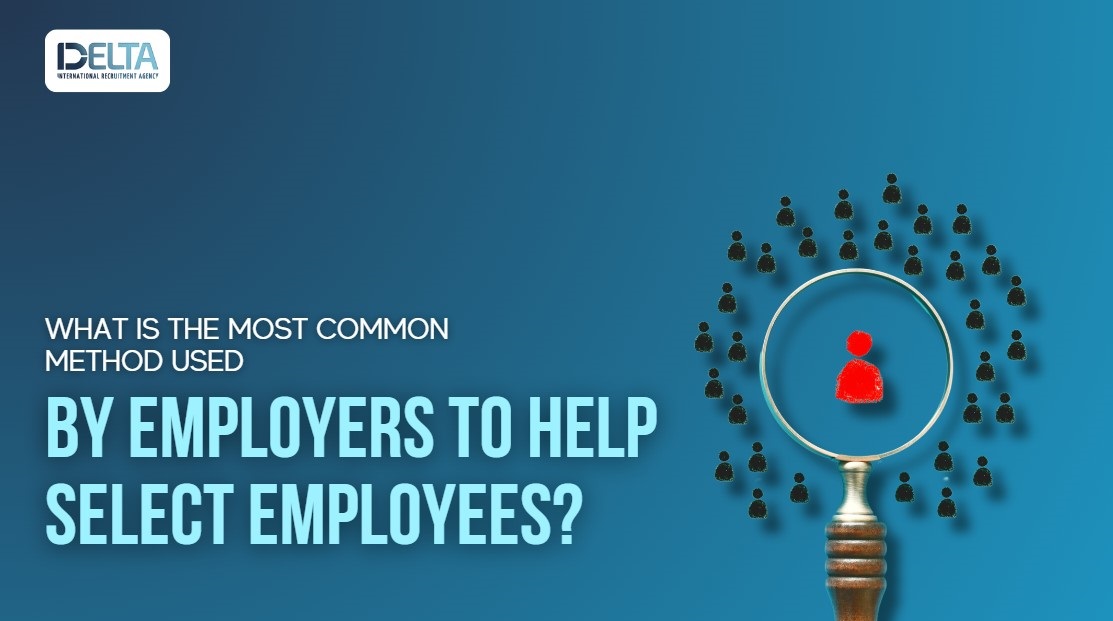Blind hiring is a recruitment strategy that aims to eliminate bias in the hiring process by removing identifiable information about candidates, such as their name, gender, or background. This approach focuses solely on the candidate’s qualifications and skills, promoting a more fair and inclusive hiring process. In this article, we will explore the concept of blind hiring, its impact on diversity, its relevance in the tech industry, legal implications, comparison to traditional hiring, and key strategies for successful implementation.
Key Takeaways
- Blind hiring promotes diversity and inclusivity by focusing on qualifications rather than personal characteristics.
- Challenges of implementing blind recruiting include ensuring data privacy and compliance with equal employment laws.
- Case studies in the tech industry demonstrate the effectiveness of blind hiring in reducing bias and increasing diversity.
- Training hiring managers is crucial for the successful implementation of blind hiring practices.
- Transparency and engagement with stakeholders are key factors in implementing blind hiring successfully.
Understanding Blind Hiring
How blind hiring works?
Benefits of Blind Hiring
Blind hiring is a transformative approach in the recruitment process, aiming to minimize bias and promote equality. It ensures that a candidate’s skills and qualifications are the sole focus during the initial screening phase. This method can lead to a more diverse and competent workforce, as it encourages the selection of candidates based on merit rather than personal details that could lead to biased decisions.
- Reduces bias: By anonymizing applications, blind hiring reduces the influence of unconscious biases related to the candidate’s name, gender, age, or ethnicity.
- Levels the playing field: It offers equal opportunities for all applicants, ensuring that everyone has a fair chance based on their abilities.
- Enhances diversity: A diverse workforce is more likely to foster creativity and innovation, as it brings together a variety of perspectives and experiences.
Blind hiring can be particularly effective in industries where innovation and creativity are highly valued, as it allows for the selection of candidates who truly fit the job requirements, regardless of their background.
Challenges of Implementing Blind Hiring
While blind hiring can be a powerful tool to reduce bias, its implementation is not without challenges. One of the primary difficulties is ensuring that all identifying information is consistently and thoroughly removed from candidates’ materials, which can be both time-consuming and prone to error.
Another significant challenge is the potential resistance from hiring managers and teams. They may be skeptical about the process or unsure about how to assess candidates without certain information. This can lead to a lack of buy-in and inconsistent application of blind hiring principles.
The integration of blind recruiting into existing recruitment systems also presents a hurdle. Many Applicant Tracking Systems (ATS) are not designed with blind hiring in mind, requiring additional customization or manual processes.
Finally, maintaining the anonymity of candidates while still being able to assess their cultural fit and soft skills is a delicate balance that needs to be struck. blind recruiting focuses on skills and experience, but personal attributes are also crucial for team dynamics.
Pro Tip: You can overseas come these hiring challenges by contacting Overseas Recruitment Agencies from Pakistan to recruit manpower and have some stable staffing solutions for your organization.
Best Practices for Blind Recruiting
To maximize the effectiveness of blind hiring, organizations should adhere to a set of best practices. Developing a standardized process is crucial to ensure fairness and consistency across all candidates. This includes creating job descriptions that focus on the skills and competencies required for the role, rather than emphasizing cultural fit or subjective criteria.
- Anonymize resumes to remove any identifying information that could lead to bias.
- Utilize skill-based assessments to evaluate candidates objectively.
- Ensure that the hiring team is diverse, to bring different perspectives to the selection process.
- Provide training on unconscious bias to all individuals involved in hiring.
By focusing on the candidates' abilities and potential, companies can create a more level playing field and tap into a wider talent pool.
It’s also important to leverage technology that supports blind hiring practices. As noted in the Ongig Blog, there are numerous tools available that can assist with anonymous resume screening and inclusive interview platforms. These tools are instrumental in building a more equitable and talented team.
Impact of Blind Hiring on Diversity
Blind Hiring Methods | Source: embroker.com
Promoting Inclusivity
Blind hiring serves as a powerful tool in promoting inclusivity within the workplace. By stripping away identifiers that can lead to bias, such as names, gender, age, and educational background, organizations create a level playing field where all candidates have an equal opportunity to showcase their skills and competencies.
- Ensures fair evaluation based on skills and experience
- Encourages a diverse pool of applicants
- Reduces the risk of discrimination during the hiring process
Blind Recruiting can significantly contribute to building a workforce that reflects the diverse society in which we live.
The practice not only fosters a culture of fairness but also enriches the organization with a variety of perspectives and ideas, which are crucial for innovation and problem-solving. Embracing this approach can lead to improved hiring decisions and, ultimately, enhance organizational performance.
Addressing Unconscious Bias
Blind hiring practices serve as a powerful tool in addressing unconscious bias, a pervasive issue in the recruitment process. By anonymizing applications and focusing solely on the skills and qualifications of candidates, companies can make strides towards more equitable hiring decisions.
- Standardization of Resumes: Ensuring that all candidates’ resumes are formatted in a similar fashion to focus on experience and skills rather than personal details.
- Structured Interviews: Developing a set of standardized questions that are asked to all interviewees to maintain consistency.
- Skill-Based Assessments: Utilizing tests or projects to assess a candidate’s ability to perform job-related tasks.
Blind Recruiting can level the playing field, allowing talent to shine through without the influence of bias.
The implementation of blind hiring can be a significant step towards dismantling the barriers erected by unconscious bias. It is not just about removing names or photos from resumes; it is about a comprehensive approach that scrutinizes every stage of the hiring process to ensure fairness and objectivity.
Measuring Success
The efficacy of blind hiring practices can be gauged through various metrics that reflect the diversity and performance of the workforce. Key performance indicators (KPIs) such as diversity rates, retention rates, and employee satisfaction scores are essential for assessing the impact of these initiatives.
- Diversity Rates: The percentage of employees from various demographic groups.
- Retention Rates: The longevity of employees within the company post-hire.
- Employee Satisfaction: Feedback and surveys measuring job satisfaction and inclusivity.
Success in blind hiring is not just about the numbers; it's about fostering an environment where diverse talent thrives and innovation is nurtured.
It’s crucial to track these metrics over time to identify trends and areas for improvement. Organizations may also benchmark against industry standards to evaluate their standing. Continuous monitoring and analysis pave the way for refining blind hiring processes and achieving sustainable success.
Blind Hiring in Tech Industry
Case Studies
The tech industry has seen a variety of approaches to blind hiring, each with its own set of outcomes. Companies like Google and BBC have implemented blind hiring processes to varying degrees, aiming to reduce bias and increase diversity within their teams.
- Google: Removed all identifying information from their applicants’ resumes, leading to a more diverse interview pool.
- BBC: Introduced an anonymized application system for some positions, which resulted in a significant increase in the diversity of applicants.
While these examples show promise, it’s important to note that blind hiring is not a one-size-fits-all solution. Each organization must tailor the approach to its unique culture and needs. For instance, a startup may find it more challenging to implement blind hiring due to resource constraints compared to larger corporations with dedicated HR teams.
The key to successful blind hiring is in its execution and the commitment to continuous improvement. It's not just about removing names or photos; it's about creating a process that consistently evaluates talent based on merit.
Technological Solutions
The advent of technology has revolutionized the way companies approach blind hiring. Innovative software solutions are now pivotal in facilitating unbiased recruitment processes. These platforms offer a range of features designed to remove identifying information from applications and assess candidates based solely on their skills and competencies.
One of the key advantages of using technology in blind hiring is the ability to standardize the evaluation process. For instance, some tools provide customizable hiring pipelines and pre-made skills assessment tests, ensuring that all applicants are judged against the same criteria. Below is a table showcasing some of the top blind recruitment tools for 2024:
| Software | Key Features | Free Trial |
|---|---|---|
| Toggl Hire | Customizable hiring pipeline, 180+ pre-made skills assessment tests | Yes |
By leveraging these technological solutions, organizations can significantly reduce the influence of unconscious bias and promote a more equitable hiring landscape.
Future Trends
The evolution of blind hiring is expected to leverage advanced technologies, such as artificial intelligence (AI) and machine learning, to further eliminate biases. AI-driven analytics will play a crucial role in refining the process, ensuring that the focus remains on the candidate’s skills and potential.
- Increased use of AI for resume screening
- Development of more sophisticated job matching algorithms
- Greater integration with diversity and inclusion initiatives
The trend towards more inclusive hiring practices is not just a moral imperative but also a strategic advantage in the competitive tech landscape
As we look to the future, the adoption of Blind Recruiting practices is likely to become more widespread, with companies seeking to gain a competitive edge by building diverse and innovative teams. The table below outlines the projected growth in the adoption of blind hiring strategies in the tech industry over the next five years:
| Year | Percentage of Tech Companies Using Blind Hiring |
|---|---|
| 2023 | 25% |
| 2024 | 35% |
| 2025 | 45% |
| 2026 | 55% |
| 2027 | 65% |
This data suggests a steady increase, reflecting a broader commitment to diversity and the recognition of the value that different perspectives bring to problem-solving and innovation.
Legal Implications of Blind Hiring
Common Hiring Biases | Source: fitsmallbusiness.com
Compliance with Equal Employment Laws
Blind hiring practices must align with equal employment laws to ensure legality and fairness in the recruitment process. Employers must navigate a complex landscape of regulations while striving to eliminate bias and discrimination.
- The Civil Rights Act, particularly Title VII, prohibits employment discrimination based on race, color, religion, sex, or national origin.
- The Americans with Disabilities Act (ADA) requires employers to provide reasonable accommodations and prohibits discrimination against individuals with disabilities.
- The Age Discrimination in Employment Act (ADEA) protects applicants and employees 40 years of age or older from discrimination.
It is crucial for organizations to understand that while blind hiring aims to promote equality, it does not exempt them from adhering to these established laws.
Employers should conduct regular audits of their hiring practices to ensure compliance and to identify any inadvertent biases that may arise despite the use of Blind Recruiting techniques.
Data Privacy Concerns
Blind hiring practices necessitate the collection and processing of candidate information in a way that anonymizes personal identifiers. This process raises significant data privacy concerns, particularly with the storage and handling of sensitive information. Employers must ensure that the systems used for Blind Recruiting are secure and compliant with data protection regulations.
- Ensure all personal data is encrypted and access is restricted.
- Regularly audit data handling processes for any potential vulnerabilities.
- Establish clear protocols for data breach incidents.
It is crucial for organizations to maintain the confidentiality of applicant data throughout the recruitment process to prevent misuse and protect candidates’ privacy.
Employers should also be transparent with candidates about how their data will be used and provide options for data removal after the hiring process concludes. Failing to address these concerns can lead to mistrust and potential legal ramifications.
Risk Mitigation Strategies
In the context of Blind Recruiting, risk mitigation strategies are essential to ensure that the process is fair, unbiased, and legally compliant. Developing a clear protocol for handling applications and interviews can prevent potential legal challenges. Employers should also consider regular audits of their hiring practices to identify and address any inadvertent biases or discriminatory patterns.
- Establish clear guidelines for the recruitment team.
- Regularly review and update hiring criteria to align with industry standards.
- Conduct training sessions on Blind Recruiting procedures and legal requirements.
- Utilize anonymizing software to remove identifying information from applications.
By proactively addressing these areas, organizations can safeguard against legal repercussions and maintain the integrity of their Blind Recruiting initiatives.
Blind Hiring vs. Traditional Hiring
Comparison of Processes
Blind hiring and traditional hiring are distinct in their approach to evaluating candidates. Blind hiring focuses on skills and competencies by removing any identifying information that could lead to bias, whereas traditional hiring often includes this information, potentially influencing the decision-making process.
- Blind Hiring:
- Anonymized resumes
- Skills-based assessments
- Structured interviews
- Traditional Hiring:
- Resumes with personal details
- Emphasis on experience and education
- Unstructured interviews
The goal of blind hiring is to create a level playing field where all candidates have an equal opportunity to showcase their abilities, free from the influence of stereotypes or prejudices.
When considering the implementation of blind hiring, it’s essential to understand the nuances and adapt processes accordingly. This can be a guide on navigating and responding to a hiring freeze efficiently, ensuring that the focus remains on merit and potential.
Effectiveness in Talent Acquisition
The effectiveness of blind hiring in talent acquisition is often debated. Proponents argue that it levels the playing field, allowing candidates to be evaluated purely on their skills and qualifications. Blind hiring can potentially lead to a more diverse and competent workforce, as it minimizes the impact of biases.
However, critics point out that blind hiring is not a panacea. It may overlook the importance of cultural fit and can be challenging to implement for roles where personality and soft skills are crucial. To truly assess its effectiveness, companies need to track hiring outcomes and employee performance over time.
While blind hiring aims to remove bias, it’s essential to ensure that the process itself does not become a checkbox exercise but rather a meaningful step towards fairer recruitment practices.
Here’s a look at how blind hiring compares with traditional hiring in terms of talent acquisition:
- Traditional Hiring: Often influenced by a candidate’s resume, interview presence, and referrals.
- Blind Hiring: Focuses on skills tests, work samples, and structured interviews.
- Outcome Tracking: Necessary to measure the long-term success of blind hiring strategies.
Adapting to Changing Workforce Dynamics
The landscape of the workforce is evolving rapidly, with a growing emphasis on diversity and inclusion as well as the need for flexibility and work-life balance. Blind hiring practices must adapt to these changes to remain effective and relevant.
- Emphasis on Diversity and Inclusion: Companies are recognizing the value of a diverse workforce and are implementing blind hiring to help achieve this goal.
- Flexibility and Work-Life Balance: Candidates are increasingly seeking employers who offer flexible working arrangements and respect for personal time.
Blind hiring can be a strategic tool in adapting to these new workforce dynamics, ensuring that the focus remains on the candidate’s skills and potential rather than personal details that could lead to bias.
As the workforce continues to diversify, Blind Recruiting may become an essential component of the recruitment process, aligning with the values of modern job seekers and the companies looking to attract them.
Implementing Blind Hiring Successfully
Training Hiring Managers
For blind hiring to be effective, it is crucial to train hiring managers on the nuances of this approach. They must understand how to assess candidates without the influence of demographic information, focusing solely on skills and qualifications.
- Educate on the principles of Blind Recruiting
- Develop unbiased evaluation criteria
- Practice using blind hiring tools and platforms
Ensuring that hiring managers are well-versed in Blind Recruiting techniques is a cornerstone of a successful implementation.
Regular workshops and training sessions can help inculcate the necessary competencies for hiring managers. It’s also important to establish a continuous feedback loop where hiring managers can share their experiences and learn from each other.
Engaging Stakeholders
Engaging stakeholders is a critical step in the successful implementation of blind hiring practices. Stakeholders, including hiring managers, team members, and HR professionals, must be aligned with the goals and processes of blind hiring to ensure its effectiveness.
- Hiring Managers: They play a pivotal role in shaping the hiring process and must be trained to understand the value of Blind Recruiting.
- Team Members: Their involvement ensures that the team dynamic and culture are considered during the hiring process.
- HR Professionals: They are essential in designing and enforcing blind hiring protocols.
By fostering a culture of inclusivity and collaboration, organizations can leverage the collective efforts of all stakeholders to champion blind hiring initiatives.
Ensuring Transparency
Ensuring transparency in blind hiring is crucial to maintain trust among candidates and within the organization. Transparency helps to uphold the integrity of the hiring process and assures applicants that their skills and experience are the sole factors under consideration.
- Communicate the blind hiring process clearly to all candidates.
- Provide feedback to unsuccessful candidates based on objective criteria.
- Regularly review and report on hiring practices to internal and external stakeholders.
By being transparent, organizations can prevent misunderstandings and promote a culture of openness. This approach not only supports fair hiring practices but also enhances the employer brand.
Transparency is not just about the process; it’s also about the outcomes. Organizations should track and share metrics on the effectiveness of Blind Recruiting, such as the diversity of the applicant pool and the rate at which diverse candidates are hired.
Conclusion
In conclusion, blind hiring is a controversial yet promising recruiting tactic that aims to reduce bias in the hiring process. While it has its challenges and limitations, such as potential lack of context and information, it can lead to more diverse and inclusive teams. Organizations should carefully consider the pros and cons of blind hiring and implement it thoughtfully to achieve its intended benefits.
Frequently Asked Questions
What is blind hiring and how does it differ from traditional hiring methods?
Blind hiring is a recruitment strategy where personal information such as name, gender, or education is removed from job applications to reduce bias. It differs from traditional hiring by focusing solely on skills and qualifications.
What are the benefits of implementing blind hiring practices?
Benefits of blind hiring include increased diversity, reduced bias, improved candidate pool quality, and enhanced focus on skills and qualifications.
What challenges do organizations face when trying to implement blind hiring?
Challenges may include designing unbiased job assessments, ensuring data privacy compliance, and overcoming resistance from stakeholders accustomed to traditional hiring methods.
How does Blind Recruiting contribute?
Blind hiring promotes inclusivity by providing equal opportunities to candidates regardless of their background, fostering a more diverse workforce and creating a fair selection process.
What role does addressing unconscious bias play in the success of blind hiring initiatives?
Addressing unconscious bias is crucial in blind hiring to ensure that decisions are based on merit and qualifications rather than subjective judgments or stereotypes, leading to a more equitable recruitment process.
How can organizations measure the success of their blind hiring initiatives?
Organizations can measure success by tracking key metrics such as diversity in hires, retention rates, performance evaluations, and feedback from candidates to evaluate the impact of blind hiring on their recruitment outcomes.
What are some case studies that demonstrate the effectiveness of blind hiring in the tech industry?
Case studies like those of Google, Microsoft, and IBM have shown that blind hiring practices can lead to increased diversity, improved talent acquisition, and innovation within tech companies.
What technological solutions can support the implementation of blind hiring processes?
Technological solutions such as blind recruitment software, AI-driven screening tools, and anonymized resume platforms can help automate the blind hiring process and enhance objectivity in candidate evaluation.
Tips for Employers: What is Blind Hiring? Effective Recruiting Tactic or Not




